|
Sugar Consumption Stats
The average North American consumes at least 64 pounds of sugar per year, and the average teenage boy at least 109 pounds. Per capita consumption of added sugars has risen by 28 percent since 1983. We consume 22 teaspoons of added sugars a day, teens 34 teaspoons. If you're trying to limit the amount of sugar you eat, then you need to learn the other names for sugar on food labels. Sugar comes in so many forms and goes by so many names that it’s hard to understand how to avoid it! We hope to help you better identify all of sugar’s alias names. Why Worry About Sugar? Sugar is often a hidden ingredient in processed foods. It enhances flavor, promotes browning and aids in preservation; however, the high sugar content in foods comes with a trade off - excessive sugar intake can lead to type 2 diabetes and the recently discovered Type 3 Diabetes (Alzheimer’s). It contributes to metabolic syndrome and leads to excessive weight gain. The empty calories in sugar don't provide any nutritional benefit to the body, which is why it is important to know other names for sugar on food labels. Diets high in added sugars are also lower in levels of fiber, vitamins and minerals, and other nutrients, and by displacing these protective nutrients, added sugars may increase the risk of osteoporosis, certain cancers, high blood pressure and other health problems. Deceptive Product Labelling Sugar masquerades under a variety of guises and trying to figure out what percentage of calories these sugars represent in a packaged food product is close to impossible. That's because the FDA has refused to add an "Added Sugars" line (in grams) within the "Sugars" section on the nutrition facts label. Instead, added sugars are only mentioned in the ingredient list -- and only in decreasing weight order, not by percentage of calories. Food companies not are taking advantage of by using several sugar synonyms in the ingredient lists of a single product. Added sugars are added sugars. No matter what you call them, they do pretty much the same thing to food (make it taste sweeter). So by dividing the total amount of added sugars into three or four different sugar names instead of using just one type of sugar, companies are able drop their added sugars further down the list (the less the weight, the lower the rank on the ingredient list). So for example, if a manufacturer wants to sweeten up a certain brand of crackers, it can either do this using 15 grams of "sugar" or, 5 grams of "malt syrup," 5 grams of "invert sugar" and 5 grams of "glucose". Some manufacturers seem to be choosing this divide and masquerade method, placing these ingredients lower down on their products' lists, making us believe that the amount of sugar in the product is smaller than it is. Bingo! Four examples of foods that have divided their total added sugar content between several confusing synonyms (note where these names are positioned on the ingredient list). 1. Chocolate Chip Bars: Granola (whole grain oats, brown sugar, crisp rice (rice flour, sugar, salt, malted barley extract), whole grain rolled wheat, soybean oil, dried coconut, whole wheat flour, sodium bicarbonate, soy lecithin, caramel color, nonfat dry milk), corn syrup, semisweet chocolate chips, brown rice crisp, sunflower oil, oligofructose, polydextrose, corn syrup solids, glycerin. Contains 2 percent or less of water, invert sugar, salt, molasses, sucralose, natural and artificial flavor, BHT, citric acid 2. Nutrition Bars: Soy protein nuggets, Yogurt coating (sugar, palm kernel oil, nonfat fry milk solids, Yogurt powder, soy lecithin, salt), corn syrup, milk protein isolate, fructose, almonds, palm oil, water 3. Wheat Thins: Whole grain wheat flour, unbleached enriched flour, soybean oil, sugar, cornstarch, malt syrup, salt, invert sugar, monoglycerides, leavening, vegetable color 4. Club Crackers: Enriched flour, soybean oil with TBHQ for freshness, sugar, contains two percent of less of: salt, leavening, high fructose corn syrup, corn syrup, cornstarch, soy lecithin Other Names for Sugar on Food Labels There are many different names for sugar. Two really good ways to disguise sugar on food labels is to use a long, scientific sounding word or to rename the sugar altogether. One of the easiest ways to recognize sugar on a food label is by recognizing the -ose suffix. When you find words that end in -ose, there's a good chance it is sugar. Sugars ending in -ose include: Sucrose, Maltose, Dextrose, Fructose, Glucose, Galactose, Lactose, High fructose corn syrup, Glucose solids Just because it doesn't end in -ose, however, doesn't mean it isn't sugar. There are plenty of other names as well that may or may not sound like sugar. Regardless of how they sound, the following are all sugar: Cane juice, Dehydrated cane juice, Cane juice solids, Cane juice crystals, Dextrin, Maltodextrin, Dextran, Barley malt, Beet sugar, Corn syrup, Corn syrup solids, Caramel, Buttered syrup, Carob syrup, Brown sugar, Date sugar, Malt syrup, Diatase, Diatastic malt, Fruit juice, Fruit juice concentrate, Dehydrated fruit juice, Fruit juice crystals, Golden syrup, Turbinado, Sorghum syrup, Refiner's syrup, Ethyl maltol, Maple syrup, Yellow sugar Source Links: http://www.huffingtonpost.com/pooja-r-mottl/food-labels-hidden-sugars_b_808881.html http://diet.lovetoknow.com/wiki/Other_Names_for_Sugar_on_Food_Labels
0 Comments
Our last blog looked at high fructose corn syrup in refined foods, and how it leads to metabolic syndrome...which in turn causes us to think we are starving all the time, consuming more calories and gaining weight.
It's not just metabolic syndrome that is causing us to consume more - food has become a drug, engineered, cooked and marketed by an industry banking on addiction. Food scientists have gone into a lab, and created these chemical concoctions that are very sweet, very fatty and very salty and they call it a "bliss point". Big food companies engineer processed foods with ingredients that peak the taste buds while checking the brain into thinking you're still hungry causing you to eat more. Another major profit generating ingredient is food marketing in the US and Canada there's virtually no regulation of food and drink advertising even when it targets children. A lot of people in these companies put a lot of work into making sure we keep on eating. These companies rely on the deep science to understand how we're attracted to the food, and how they can make their foods attractive to us. The result is carefully engineer combinations of salt sugar, fat and chemicals deliberately designed so you cant eat just one. The food companies know that when perfect amounts of fat, sugar and salt are added, the products become highly addictive. When they hit that combination, they know their products will fly off the shelves - we will buy more, and as companies they will make more money. Also, because these products must be able to sit on the shelves for months, many of the ingredients have nothing to do with taste, but act as preservatives and chemicals to control the appearance of texture and a series of ingredients known as flavour enhancers - to trick the brain into tasting something that isn't there. There's tremendous amounts of money spent behind creating tastes and smells that feel real, but in reality are completely artificial, because without flavour enhancement, no one would eat it. A tour of the grocery aisle reveals that something is changing - suddenly cookies boast health claims, chips have whole grain and fibre. Because they taste so good, we want to believe their claims. Ask yourself though - is the food manufactured, or is it farmed (I.e exists in nature like fruits/vegetables, meats, fish, eggs etc)? Real foods don’t have any of these additives or preservatives….they don’t have huge marketing companies, fancy packaging, tv and print commercials…or any of the added chemicals. Just another reason to steer clear of refined and processed foods. This is a continuation to last week’s post on the dangers of high-fructose corn syryup. (University of California research as presented by Dr. Lustig). High fructose corn syrup is such a problem because it is finding its way into just about all things packaged – it is added to all sorts of packaged foods for palatability, as a browning agent, to increase shelf life, to make things freeze and thaw better (for shipping purposes, or in for fast food). Its’s not just in the foods that you would typically think of as unhealthy either! Here are some categories of foods that most commonly contain the ingredient:
- Juice & soda: this is the most common source for toddlers and kids. - Breakfast cereal: including all the healthy ones lie Raisin Bran, Special K, Smart Start - yogurt: any of the low-fat varieties, or the ones that contain fruit. - Sauces & condiments: bbq sauces, ketchup, relish, stir-fry sauces etc. - Fruit: Baked beans & pickles, as well as in the syrup that fruit is packed in (canned and bottled fruit). - Salad dressings: especially the low fat or calorie-wise versions. Kraft is one of the worst brands for using HFCS. - breads and baked goods: wonderbread, and whole grain breads - Candy & candy bars: just about all of them! - Nutrition bars: PowerBar and other sports nutrition bars, as well as meal replacement bars and granola bars. For a list of common products containing HFCS: http://www.celestialhealing.net/Food_contain_HFCS.htm HFCS leading to Metabolic Syndrome Today's obesity rates are not only caused by an increase in overall caloric intake, but it's caused by a reduction in physical activity. This reduction physical activity is not due to laziness, in reality it is has a connection to high fructose corn syrup. An easy way to illustrate this effect is to look at kids. The prevalence of a obesity is going up in the group that you can least ascribe the personal responsibility to, the toddler. We are even seeing an epidemic of overweight and obese six month olds. This is because we are feeding them an excess of fruit juices soda and baby formula that has high fructose corn syrup in the ingredient list. So, what is metabolic syndrome? Here's an example: When you give a normal five-year-old kid a cookie what happens? They bounce off walls, everybody knows this right? And here is why - when the kid eats the cookie, the fat cells in his body gets filled, the leptin goes up…tells the brain "hey, I've got extra energy on board". This tells the sympathetic nervous system (the fight or flight part of the nervous system that innervates your muscles and fat cells) "hey, I got too much energy", so what happens? You burn it off, so the sympathetic nervous system sends a signal to the muscles to begin fidgeting. It also sends a signal to the fat cells releases the extra fat...and that gets used for energy later. So this is a nice negative feedback pathway that keeps you in energy balance as long as your brain can see it leptin. So here's the paradox: what happens if you give an obese five-year-old kid a cookie instead? Answer: They are in the pantry looking for more cookies! A sugar high in an obese kid doesn't exist, and that's why they're obese, it's because they don't get the sugar high, because they can't see their leptin - this is the disorder of energy utilization and storage known as metabolic syndrome. Chronic fructose exposure alone promotes the metabolic syndrome - this is because hepatic fructose metabolism is completely different from that of glucose. This is what makes the prevalence of fructose and HFCS so dangerous! Leptin is important because it tells the hypothalamus that you have the energy to burn. However, insulin causes leptin resistance (insulin block leptin). If everything we’re eating creates these insulin spikes, you can't see leptin…so, you're not only are always starving, but you don't want to do anything. The dose determines the poison...and our food supply is definitely in overdose. We are releasing double to triple the amount of insulin that we were 25 years ago. This needs to change! Learn to read labels, and check the ingredient lists of the foods you are feeding your kids. Below is a summary of the research (and conclusions arrived at) by the University of California, on high fructose diets. The research is headed by Robert H Lustig, who has authored over 85 research articles and 45 book chapters on the topic.
High-fructose corn syrup was invented in 1966 in Japan, and made its way to the US in 1975. This form of sugar represented a cheaper version of the ingredient (at less than half the cost). Because of the reduced cost of this ingredient it started being used everywhere - in fact, it is now very difficult to find a package product that does not contain high fructose corn syrup and corn syrup solids. Use in packaged foods was further increased as the country became fat conscious, and was looking for ways to reduce saturated fat intake – the result: low-fat versions of the original that needed to be sweetened in order to replace the flavour lost when reducing the fat. Structure: High-fructose corn syrup is made up of 1 glucose molecule and 1 fructose molecule (Sucrose is the same - 1 glucose molecule/1 fructose) and has been shown to be the worst combination for weight gain is the incidents where you have sucrose coupled with saturated fat (donuts or similar) if those two are on the ingredient list it's instant weight gain! Alteration of our food supply (in fast food specifically): - Addition of fructose for palatability and as a browning agent in foods. Fructose is also seven times more likely than glucose to form advanced glycation end-product's - these are responsible for browning reaction...but instead of it browning your food, it browns your arteries. - Fructose does not for suppress ghrelin (hunger hormone) so you end up eating more. Chronic fructose exposure promotes the metabolic syndrome. - Removal of fiber for increased shelf life, ease of freezing/re-thawing and quick cooking. Today's fast food is fiber-less food. - Substitution of trans-fat as a hardening agent ads shelf life now being removed due to cardiovascular disease risk Metabolic breakdown within the body: Lustig has called fructose “a poison.” This is because only the liver can metabolize fructose (glucose can be metabolized by the body)…and what do we call it when we take in a compound that's foreign to your body, and only the liver can metabolize it (and in the process generates various problems)? A poison. Because of the way that fructose is processed through the liver, uric acid is produced as a by-product. Uric acid is directly correlated to hypertension. So, as uric acid goes up, blood pressure goes up. There is a direct connection between high fructose intake and high blood pressure. Lustig has also stated that "when you are consuming fructose, you are not consuming a carbohydrate, you are consuming fat.” He has shown that 30% of calories consumed as fructose turn directly into fat. His point being, that a high sugar diet is a high-fat diet. Another study which involved a 6 day trial of high fructose feeding showed that after the six days, triglycerides doubled, lipogenesis went up five times higher, and the free fatty acids which cause insulin resistance doubled. A regular diet high in fructose also eventually leads to: Liver insulin resistance -- pancreas forced to work harder -- higher insulin levels -- raising blood pressure further -- further fat making -- more energy into your fat cell -- obesity. Not only that, their research has shown that the higher your insulin levels go the less able your brain is to see the leptin (hormonw that tells you that you’re full), so you never know that you’re full...and you've got continued consumption because your brain thinks that it's starving. This all generates a vicious cycle of consumption and disease. Comparisons between Fructose and Alcohol: Because fructose is metabolized by the liver alone it is also associated with eight of the 12 phenomenon associated with overexposure to ethanol [alcohol]. The symptoms are the same because there are metabolized in the same way. This makes sense if you look at the way that you make alcohol - you get it by fermenting sugar, naturally. Lifestyle Intervention: - get rid of all sugared liquids. - make sure that all of your carbohydrate sources are high in fibre - wait 20 minutes before going for second portions - Buy your screen time minute to minute with physical activity Take-home message: if there is high-fructose corn syrup, or corn syrup solids listed anywhere on the ingredient list, do not buy it or eat it! 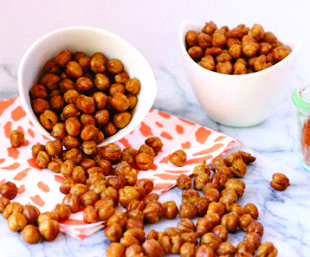 We've been getting requests for recipe ideas...so here you go! Crispy Oven Roasted Chickpeas Ingredients: - 2 15 ounce cans chickpeas - 2 tablespoon olive oil - 1/4 teaspoon cayenne pepper - 1/4 teaspoon Garam Masala - 1 teaspoon sea salt Drain and rinse the chickpeas and place them on a tray lined with paper towels to dry. Combine oil, cayenne, garam masala and salt in a medium bowl. Pour the mixture over the chickpeas and toss together. Preheat the oven 400°F. Pour the chickpeas on a baking sheet and roast for 35 to 40 minutes. Carefully shake the tray a few times between cooking. Serve hot or at room temperature. 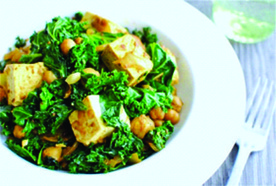 QUICK CURRIED CHICKPEAS WITH TOFU AND KALE Ingredients: - 1 bunch kale, cut into small chunks - 3 Tbs extra-virgin olive oil, divided - 1 small white onion, diced - 3 cloves garlic, minced - 1 Tbs cumin seeds, toasted - 1 Tbs. ground turmeric - 1 Tbs. garam masala - 1 (14.5 oz) can chickpeas, drained and rinsed - 3 roma tomatoes, roughly chopped - 1 diced block of extra-firm tofu (or you can substitute tofu with chicken/shrimp/beef/etc.) - coarse salt and freshly ground pepper Using a mortar and pestle, grind up the toasted cumin seed, turmeric and garam masala. Heat 1 Tbs oil in a medium skillet. Add the kale and saute until wilted, about 3 minutes. Toss in a pinch of salt. Remove from pan and set aside. To the pan, add the remaining oil. Add the onions and saute 2 minutes, or until they start to soften. Add the garlic and bloom for 30 seconds. Add the spices and toss to combine. Saute 30 more seconds. Season with a good pinch of salt and pepper. Add the chickpeas, tomatoes and 1/4 cup water. This will create a little sauce to work with. Braise a couple of minutes. Add the tofu and toss to combine. Throw that kale back in there. That’s it! 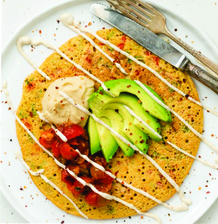 Jumbo Chickpea Pancake This dense and filling savoury chickpea pancake is packed with protein and fibre. Feel free to change up the mix-ins and toppings based on what you have in your fridge. To prevent it from sticking to the skillet, be sure to spray the skillet liberally with olive oil before pouring on the batter. Also, I suggest chopping the veggies finely so they cook faster. Ingredients: - 1 green onion, finely chopped (about 1/4 cup) - 1/4 cup finely chopped red pepper - 1/2 cup chickpea flour (also known as garbanzo flour or besan) - 1/4 teaspoon garlic powder - 1/4 teaspoon fine grain sea salt - 1/8 teaspoon freshly ground black pepper - 1/4 teaspoon baking powder - pinch red pepper flakes (optional) - 1/2 cup + 2 tablespoons water - For serving: salsa, avocado, hummus, cashew cream (optional) Directions: 1. Prepare the vegetables and set aside. Preheat a 10-inch skillet over medium heat. 2. In a small bowl, whisk together the chickpea flour, garlic powder, salt, pepper, baking powder, and optional red pepper flakes. 3. Add the water and whisk well until no clumps remain. I like to whisk it for a good 15 seconds to create lots of air bubbles in the batter. 4. Stir in the chopped vegetables. 5. When the skillet is pre-heated (a drop of water should sizzle on the pan), spray it liberally with olive oil or other non-stick cooking spray. 6. Pour on all of the batter (if making 1 large pancake) and quickly spread it out all over the pan. Cook for about 5-6 minutes on one side (timing will depend on how hot your pan is), until you can easily slide a pancake flipper/spatula under the pancake and it's firm enough not to break when flipping. Flip pancake carefully and cook for another 5 minutes, until lightly golden. Be sure to cook for enough time as this pancake takes much longer to cook compared to regular pancakes. 7. Serve on a large plate and top with your desired toppings. Leftovers can be wrapped up and placed in the fridge. Reheat on a skillet until warmed throughout.  Zucchini Noodles Marinara Substitute zucchini noodles regular pasta in your favorite pasta recipe. Zucchini noodles are so easy to make – use a spiral cutter (pictured above) and cook the noodles in a frying pan or in the oven. Zucchinis give off a lot of water as they cook, so transferring them onto paper towels after cooking will remove the excess moisture. Alternately, cooking them in the oven will do this as well (but will take longer – about 20 mins @ 375 degrees). Add your favourite pasta sauce and you’re done! Note: peeling the zucchini will give the noodles a more traditional pasta colouring. 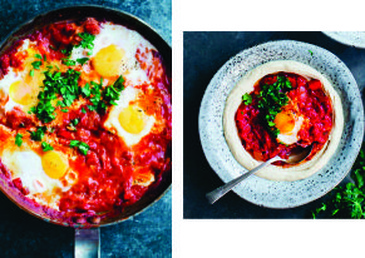 Shakshuka (over hummus) Ingredients: - 2 tbsp olive oil - 1 yellow onion, chopped finely - 3 garlic cloves, chopped finely - 1 tsp ground cumin - 1/2 tsp harissa (optional) - 3 tbsp tomato puree - 1 large red bell pepper, cut into 1/2 inch (1 cm) pieces - 2 x 14 oz (400 g) cans whole plum tomatoes of a good brand - salt - 4 eggs - a handful flat leaf parsley, roughly chopped Add olive oil to a medium-sized skillet on low/medium heat. When warm, add onion, garlic and cumin, and harissa if you are using it, and let sauté for two minutes. Add bell pepper and tomato puree and sauté for 5 minutes until softened and then add tomatoes and salt. Use the backside of a fork to mash the tomatoes (careful so they don’t splatter). Cook for approximately 30 minutes. Taste it and add more salt if needed. Make four small divots in the sauce and carefully crack the eggs into them. Cover the skillet with a lid and cook for 5 more minutes, until the egg whites have set (or longer if you prefer). Top with fresh parsley. Other meal ideal served over hummus (a great replacement in meals traditionally served over pasta or rice) |
Archives
March 2023
Categories
All
|
|
Location
Bodylab Recovery Science 52 George St, St. Catharines, ON L2R 5N6 Parking off Beech St. Call: (905) 228-3130 Email: [email protected] |
Clinic Hours
Monday 9:00 AM – 7:00 PM Tuesday 9:00 AM – 6:00 PM Wednesday 9:00 AM – 7:00 PM Thursday 9:00 AM – 6:00 PM Friday 8:00 AM – 5:00 PM Saturday Upon Request |

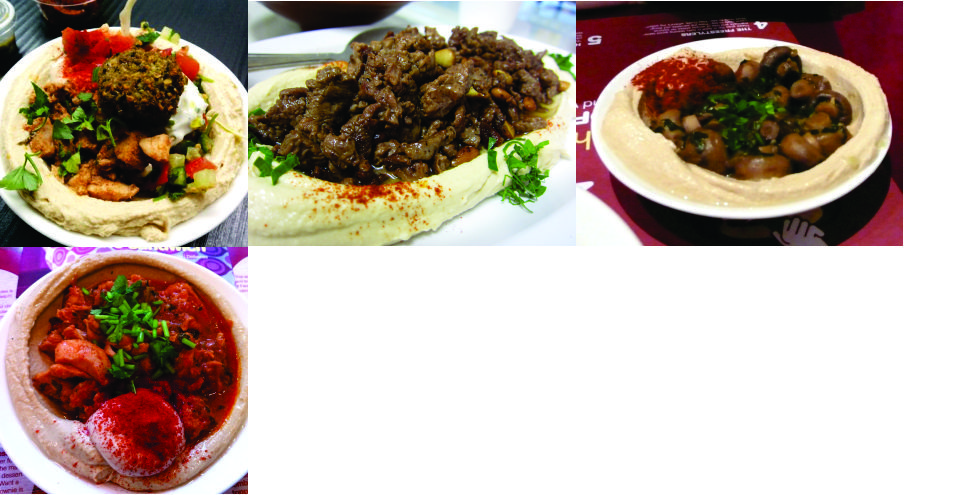
 RSS Feed
RSS Feed
